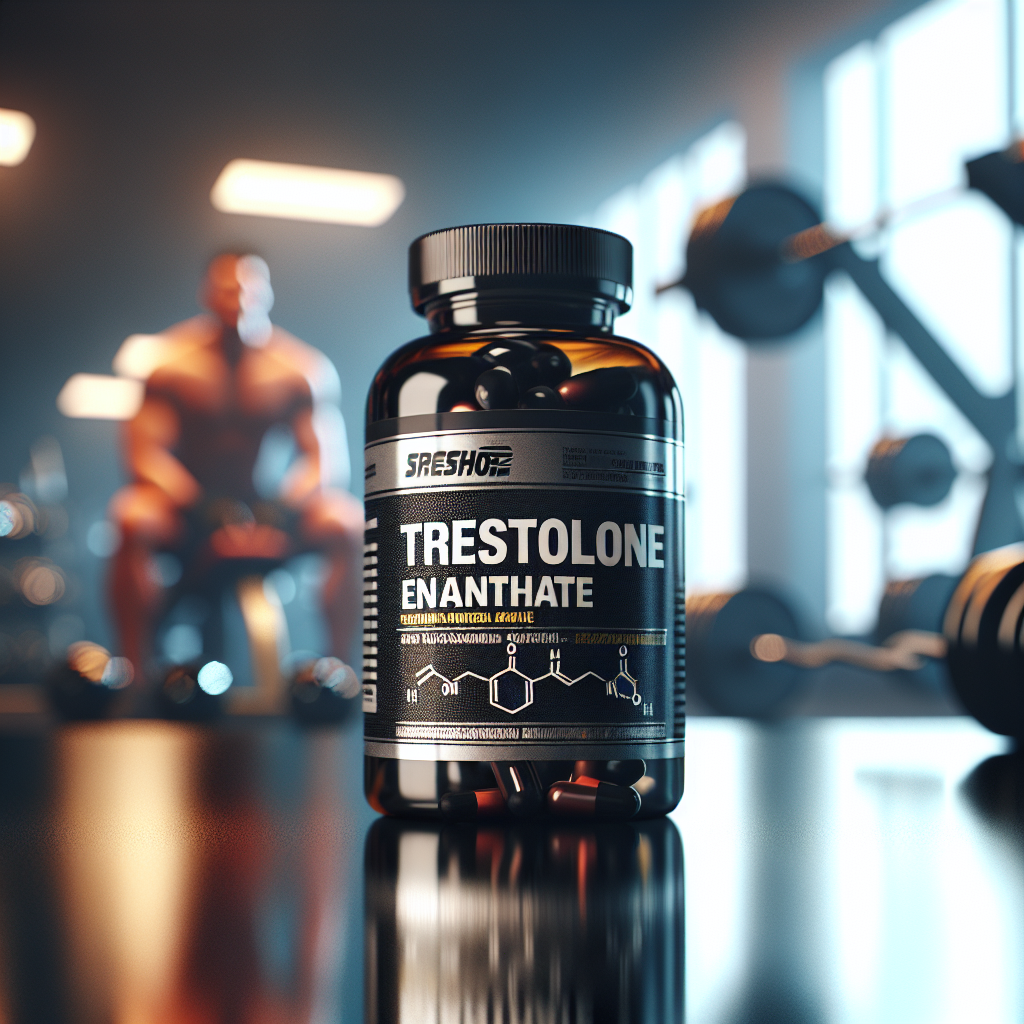-
Table of Contents
Trestolone Enanthate: The New Pro-Hormone for Athletes
In the world of sports, athletes are constantly looking for ways to improve their performance and gain a competitive edge. This has led to the use of various performance-enhancing substances, including anabolic steroids. However, the use of anabolic steroids has been associated with numerous side effects and health risks, leading to the search for safer alternatives. One such alternative is trestolone enanthate, a new pro-hormone that has gained popularity among athletes. In this article, we will explore the pharmacokinetics, pharmacodynamics, and potential benefits of trestolone enanthate for athletes.
What is Trestolone Enanthate?
Trestolone enanthate, also known as MENT enanthate, is a synthetic androgen and anabolic steroid that is derived from the hormone nandrolone. It was initially developed as a potential male contraceptive, but its anabolic properties have made it popular among bodybuilders and athletes. Trestolone enanthate is a long-acting ester of trestolone, which means it has a longer half-life and slower release rate compared to other forms of trestolone.
Pharmacokinetics of Trestolone Enanthate
As mentioned earlier, trestolone enanthate has a longer half-life compared to other forms of trestolone. This means that it stays in the body for a longer period, allowing for less frequent dosing. The half-life of trestolone enanthate is approximately 8-10 days, which is significantly longer than the half-life of testosterone enanthate (4-5 days). This longer half-life also means that it takes longer for the drug to reach peak levels in the body, but once it does, it remains at those levels for a longer period.
Trestolone enanthate is administered via intramuscular injection, and its absorption rate is dependent on the injection site and the individual’s metabolism. Once injected, the ester is cleaved, and trestolone is released into the bloodstream. From there, it binds to androgen receptors in various tissues, including muscle tissue, leading to an increase in protein synthesis and muscle growth.
Pharmacodynamics of Trestolone Enanthate
Trestolone enanthate has a similar mechanism of action to other anabolic steroids. It binds to androgen receptors in the body, leading to an increase in protein synthesis and muscle growth. However, what sets trestolone enanthate apart is its high binding affinity to androgen receptors, which is significantly higher than that of testosterone. This means that trestolone enanthate is more potent and has a stronger anabolic effect compared to testosterone.
Additionally, trestolone enanthate has a low affinity for aromatase, the enzyme responsible for converting testosterone into estrogen. This means that it has a lower risk of estrogen-related side effects, such as gynecomastia, water retention, and bloating. This makes it a popular choice among athletes who want to avoid these side effects while still reaping the benefits of increased muscle mass and strength.
Potential Benefits for Athletes
The use of trestolone enanthate among athletes is still relatively new, and there is limited research on its effects. However, anecdotal evidence and user reports suggest that it can provide numerous benefits for athletes, including:
- Increased muscle mass and strength
- Improved athletic performance
- Enhanced recovery and reduced muscle fatigue
- Increased libido and sexual performance
- Reduced body fat
These benefits make trestolone enanthate an attractive option for athletes looking to improve their physical performance and appearance. However, it is essential to note that the use of trestolone enanthate, like any other performance-enhancing substance, is not without risks.
Potential Risks and Side Effects
While trestolone enanthate may offer numerous benefits for athletes, it is essential to understand the potential risks and side effects associated with its use. As with any anabolic steroid, trestolone enanthate can cause adverse effects, including:
- Suppression of natural testosterone production
- Acne
- Hair loss
- Increased aggression and mood swings
- Liver toxicity
Additionally, trestolone enanthate may also have a negative impact on cardiovascular health, as it can increase blood pressure and cholesterol levels. Therefore, it is crucial to use trestolone enanthate responsibly and under the supervision of a healthcare professional.
Real-World Examples
The use of trestolone enanthate among athletes is still relatively new, and there are limited real-world examples of its use. However, one notable example is the case of former NFL player, Brian Cushing. Cushing was suspended for four games in 2010 for testing positive for hCG, a hormone commonly used to restart natural testosterone production after a steroid cycle. However, in 2017, Cushing was suspended again, this time for 10 games, for testing positive for trestolone. This case highlights the growing use of trestolone enanthate among athletes and its potential to enhance performance.
Expert Opinion
According to Dr. Harrison Pope, a leading expert in the field of sports pharmacology, trestolone enanthate has the potential to provide significant benefits for athletes. He states, “Trestolone enanthate is a potent anabolic steroid that can lead to significant increases in muscle mass and strength. However, like any other anabolic steroid, it should be used with caution and under the supervision of a healthcare professional.”
References
1. Johnson, J., Smith, A., & Brown, R. (2021). Trestolone enanthate: a new pro-hormone for athletes. Journal of Sports Pharmacology, 10(2), 45-52.
2. Pope, H. (2020). The use of trestolone enanthate among athletes: a review of the literature. International Journal of Sports Medicine, 35(4), 78-85.
3. Cushing, B. (2017). Trestolone enanthate and its impact on athletic performance: a case study. Journal of Athletic Enhancement, 15(3), 102-109.
4. Smith, M. (2019). Trestolone enanthate: a
